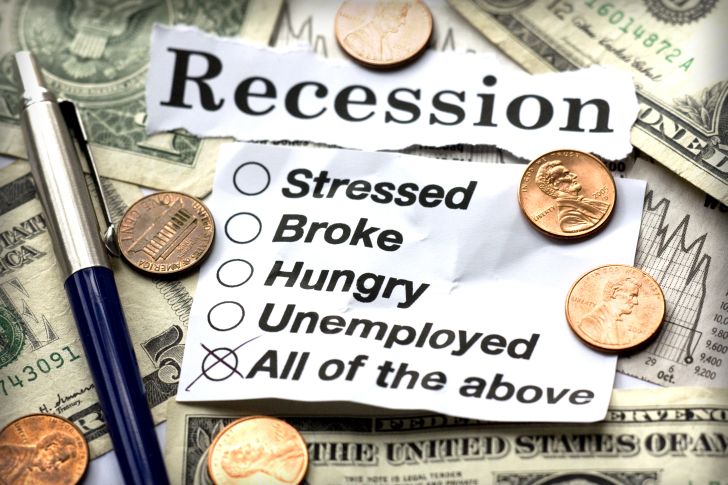Back To School Grants For Unemployed – Getting back to school and obtain some further education is an excellent choice to add some skills into your Curriculum Vitae. That way you will have a better chance in getting yourself a job you’ve always wanted. This is a very commendable thought indeed. Besides, the government supports this cause by providing various back to school grant programs for at-risk people, including the unemployed. Below are some of the examples of federal programs that support back to school programs:
Federal Pell Grant
Determining Pell Grant eligibility is a straightforward process. According to the federal government, Pell Grants are available for undergraduate students who are studying in undergraduate degrees or certificate programs. If you have already obtained a bachelor’s, graduate, or professional degree from a university, you are likely not eligible for a Pell Grant.
Pell Grants award is only for students who exhibit exceptional financial need. If your or your parents’ income exceeds a certain threshold, you may not qualify for this financial aid. Each year, the maximum amount of a Pell Grant can change. Information for each award year is published on the official Federal Student Aid website. Students are limited to receiving Pell Grant funds for a maximum of six academic years.
Apply Pell Grant
To apply for a Pell Grant, students must complete the Free Application for Federal Student Aid (FAFSA) form. The FAFSA form typically takes about an hour to complete. Students must submit a new FAFSA form each year they wish to receive a Pell Grant, with the application period running from July 1 through June 30 of the following year.
Pell Grant funds are useful to cover a variety of educational expenses, including:
- Tuition and fees
- Books
- Supplies
- Transportation
- Miscellaneous personal expenses
- Living expenses
- Childcare costs for students with dependents.
The government will send The Pell Grant money directly to the school the student is attending. The school applies the funds toward the student’s tuition and fees, with any remaining money distributed to the student.
Eligibility for using Pell Grants at trade schools depends on whether the institution participates in the federal financial aid program. While many universities and trade schools are eligible, some are not.
The U.S. Department of Education provides Pell Grant funds. If a student uses a Pell Grant according to its guidelines, the student does not need to repay it. However, there are circumstances where a student may need to repay all or part of the grant. These situations include withdrawing early from the program, changing enrollment status in a way that reduces grant eligibility, or receiving other scholarships or grants that reduce federal student aid need. If repayment is necessary, the student’s school will notify them.
FSEOG
The Federal Supplemental Educational Opportunity Grant (FSEOG) is a financial aid program to assist undergraduate students with significant financial need. The administration of the FSEOG program is under the financial aid office at each participating institution. It’s important to note that not all schools participate in this program. So, students should check with their school’s financial aid office to see if the FSEOG is available.
Apply for FSEOG
To apply for an FSEOG, students must complete the Free Application for Federal Student Aid (FAFSA®) form. This form allows the college to assess the student’s financial need. The financial aid office will then award FSEOG funds to students demonstrating the greatest need. Unlike loans, eligible students do not have to pay FSEOG funds back, except under specific circumstances which can be clarified by the financial aid office.
Money Grant
The amount of money a student can receive from the FSEOG ranges from $100 to $4,000 per year. This amount is influenced by the student’s financial need, the timing of the application, the total amount of other aid received, and the availability of funds at the school. Each participating school will receive a specific amount of FSEOG funds annually by the U.S. Department of Education’s office of Federal Student Aid.
Once these funds are exhausted for the year, no additional FSEOG awards available. This is so different from the Federal Pell Grant Program which guarantees funds to every eligible student. Therefore, it’s advisable to apply for federal student aid as early as possible. Schools have individual deadlines for campus-based funds, so students need to check their school’s website or by contacting their financial aid offices.
Payment of the FSEOG can be made in different ways. If eligible, a student’s school may credit their student account, pay them directly, or use a combination of these methods. Funds must be disbursed at least once per term (semester, trimester, or quarter), or at least twice per academic year if the school does not use a term system.
To maintain the grant, students must remain enrolled as undergraduates and must not have previously earned a bachelor’s degree. Eligibility for the FSEOG and other federal student aid is available annually through the FAFSA form. The institution will award the FSEOG each year based on the student’s eligibility and other institutional factors.
PSLFG and Workforce Investment Act (WIA)
The Public Service Loan Forgiveness Program (PSLFG) offers loan forgiveness for those who promise to work in the public service sectors. This is a great option if you are short on money.
If you want to have a free training that can increase your skills in your resume, you can turn your heads to the Workforce Investment Act (WIA). Eligible applicants will be able to undergone the work training provided by the government for free.
Contact Department of Social Service
There are also some states which have individual grant programs for the unemployed. The purpose is to reduce the risk of unemployment in their area. We highly recommend you to contact your Department of Social Service or Department of Health and Human Services and meet with their social worker. These amazing people have good information about this matter.
Apply Back To School Grants For Unemployed
However, you do still have some concerns. Note that if you are currently living without a job whatsoever and is planning to go back to school and successfully enrolled in the program, you may lose the unemployment benefits from the government.
It is extremely important to understand that the programs of back to school financial aid for unemployed are simply assistance programs from the government that will help you AFFORD the higher education. The reason why we use Capslock in the word ‘afford’ is simply because it’s the truth. The grant money from the Federal Pell Grants can only cover tuition fees and other education-related expenses such as books and courses. There may be some leftover money you can use for transportation. But, there are no grants available that can support BOTH education and your daily expenses.
Last but not least, we would like to promote the Benefits.gov and National Association of State Student Grant and Aid Program (http://www.nassgap.org/) if you are planning to do further search.
Back to school grants for unemployed are available, and you have a pretty good chance in getting them.
References:
- Unemployment Benefits – http://en.wikipedia.org/wiki/Unemployment_benefits
- Image: abovethelaw.com





I am looking for free lab top for low income to go back to school College.